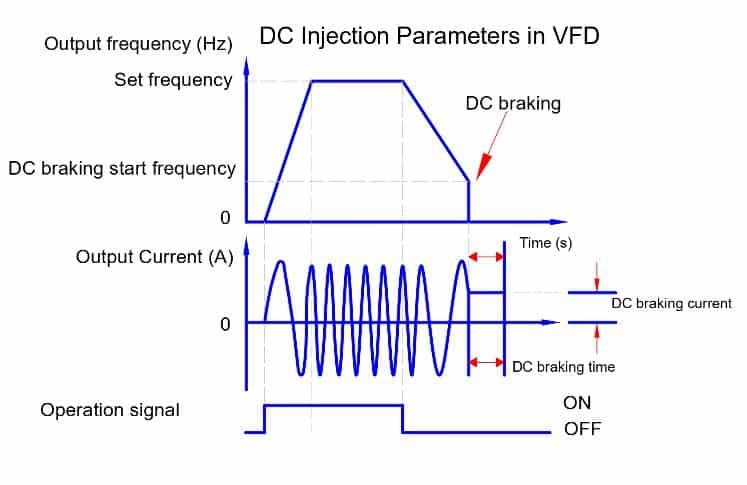DC injection braking in vfd is one of the methods of braking of the motor. In this article, we will understand what is DC braking & its working.
Ideally, the motor must stop after a stop command is given to VFD. However, practically motor keeps running and comes at a standstill after some time. This happens as per Newton’s law of inertia. The motor keeps running unless some external force is applied against the motor torque. In a normal case, it is air friction. But, in this case, the motor stops slowly.
After the stop command to VFD, the motor keeps running. And in this case, when the frequency of VFD is zero the VFD injects DC voltage in the stator winding. The VFD can inject the voltage in one or more winding according to the braking torque requirement. The motor comes at a standstill after injecting DC in its winding. Therefore, this method of motor braking is called DC Injection braking.
Now, let us understand how the DC Injection brake the motor.
Working of DC Injection braking in VFD
When we inject the DC in the stator winding when the motor is in rotation( Under supply off condition). The stator winding generates a magnetic field. As the rotor is rotating in a magnetic field, the voltage induces in the rotor winding.
The rotor winding of the induction motor is a short circuit at the end rings. Therefore, the induced voltage causes the current to flow in the winding.

The braking torque produced in the motor depends on the winding resistance and the current flowing through it. The resistance of the stator winding is fixed for a particular motor. Thus the braking torque is proportional to the square of the stator current. The stator current depends on the magnitude of the DC voltage injected.
Thus, we can control the braking torque of the motor in the following ways.
- By increasing stator resistance- This can be done by taking more stator winding in the circuit
- By increasing DC voltage – This parameter we can set in VFD.
The huge braking torque is possible to produce through DC Injection braking. However, all the heat dissipates in the rotor winding at the time motor is slowly rotating. Therefore, it affects the insulation life of the winding.
Read Next: